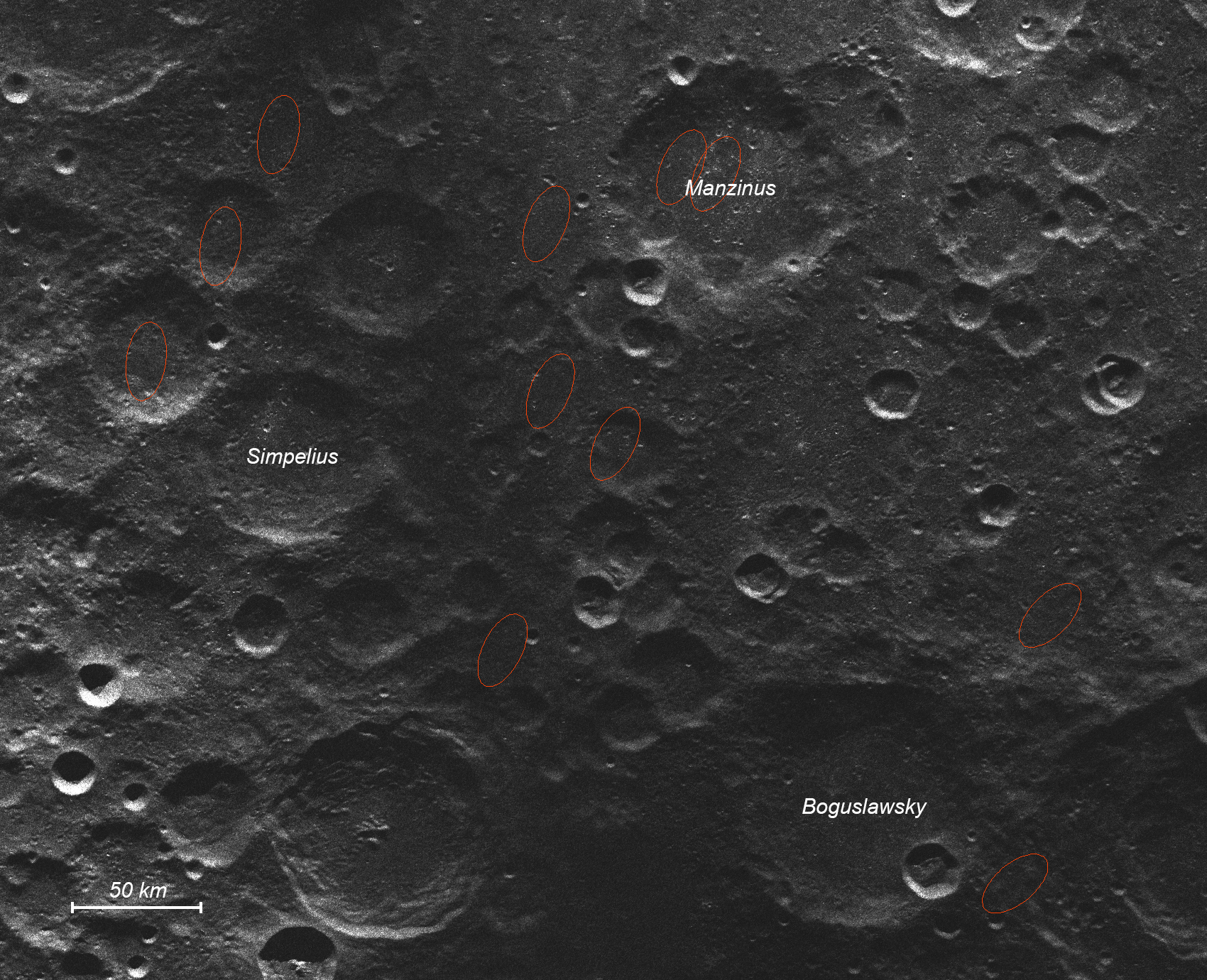Manzinus and Boguslawsky Craters
In 2023 the landing of the Luna-25 interplanetary space probe near the south pole of the Moon was planned to investigate the upper surface layer and the exosphere, to construct a map of surface irregularities, and to try out the technologies of safe landing in a region with a rugged relief. The landing site was chosen based on the site latitude, the water mass fraction in the upper regolith layer, and the smoothness and slope of the surface devoid, if possible, of large rocks that pose a serious threat to the lander. The main and reserved landing sites located near the Manzinus and Boguslawsky craters were chosen according to these criteria. These sites are determined by the "scatter ellipses" of the expected landing points relative to the "aiming point" and have major axes of 30 km along the local meridian and 15 km along the local parallel with selenographic coordinates of their centers 69.55° S, 43.54◦ E and 68.77° S, 21.21° E, respectively.
Observation Schedule
| Date | Window, UT | Receiver |
Transmitter |
Frequency, MHz |
λ, cm |
Ptx, kW |
|---|---|---|---|---|---|---|
| 2023 Mar 30 | 14:10 - 15:20 | RT-13 (Sw, Zv) | TNA-1500 |
7190.0 | 4.2 | 1.5 |
Range-Doppler radar images
We present new radar images and polarimetric data for the candidate landing sites of the Russian Luna-25 spacecraft near the Manzinus and Boguslawsky craters in the south polar region of the Moon [1]. The data were obtained using the 64-meter antenna (TNA-1500) of the Satellite Communications Center Bear Lakes of the Special Design Bureau of the Moscow Power Engineering Institute [2] and the 13.2-meter radio radio telescopes (RT-13) of the Svetloe and Zelenchukskaya Observatories of the Institute of Applied Astronomy, Russian Academy of Sciences, at a wavelength of 4.2 cm. At this wavelength, radar signals penetrate the lunar regolith to depths of up to 1 m and are sensitive to surface and suspended rocks larger than 1 cm. The data obtained as a result of this work can be used for planning future lunar missions.
Remarks
We thank the technical staff of the SCC Bear Lakes of the SDB MPEI for the help with the radar observations.
